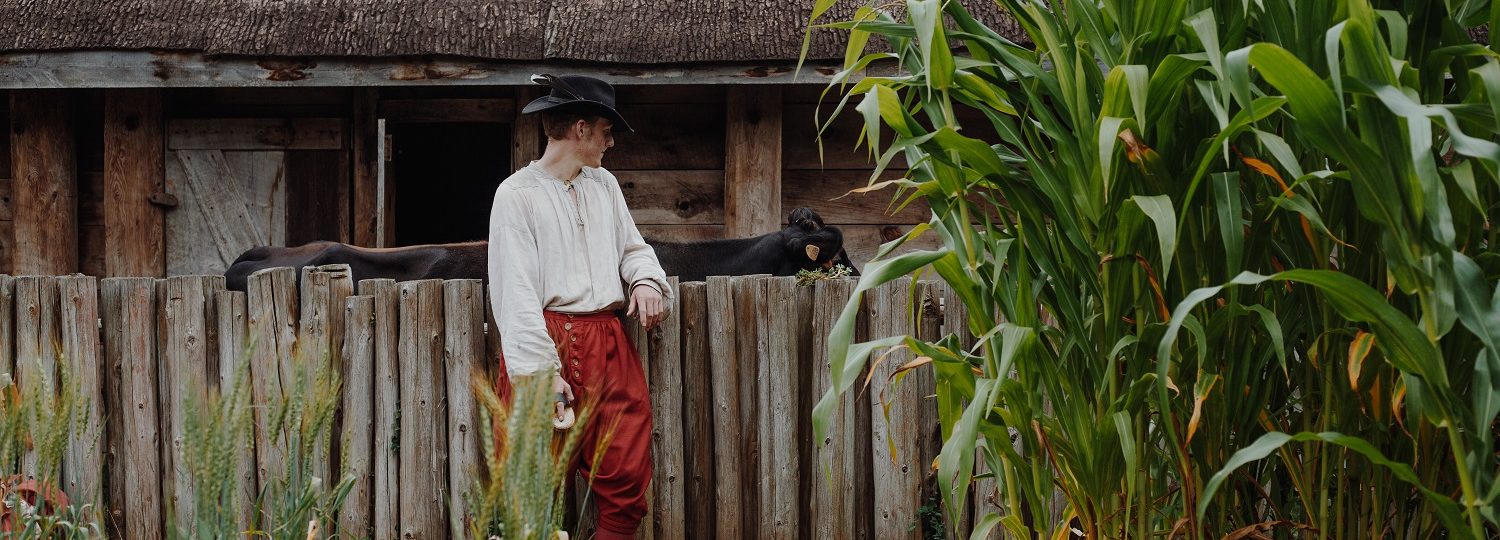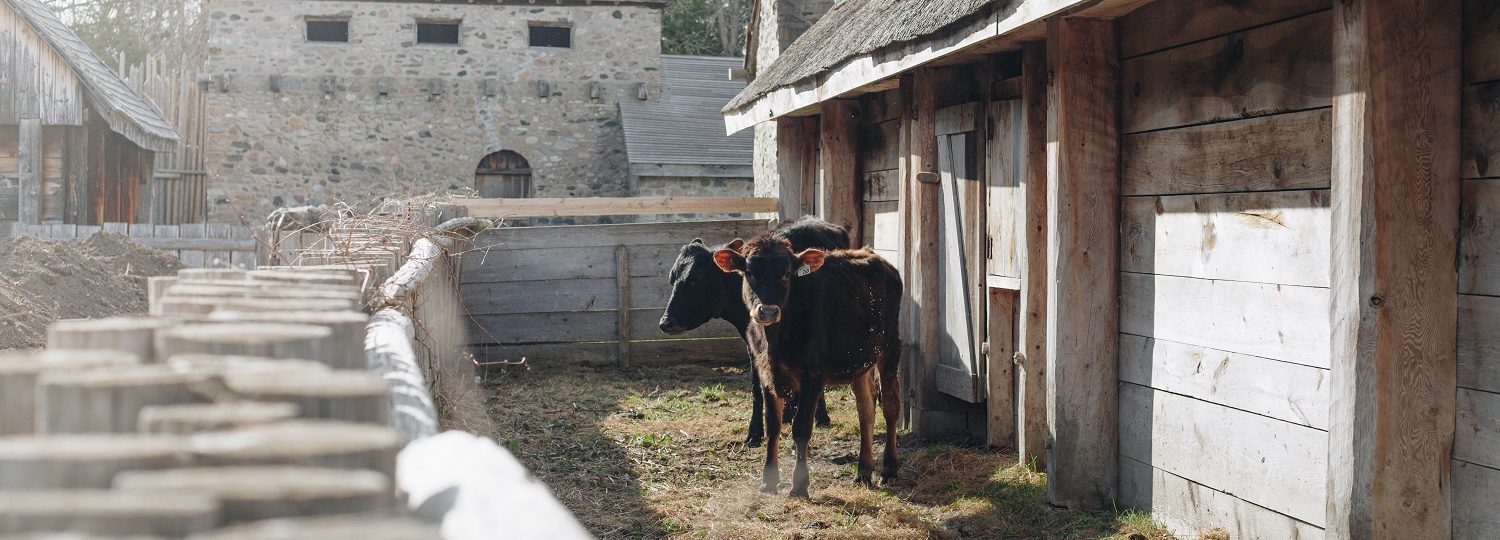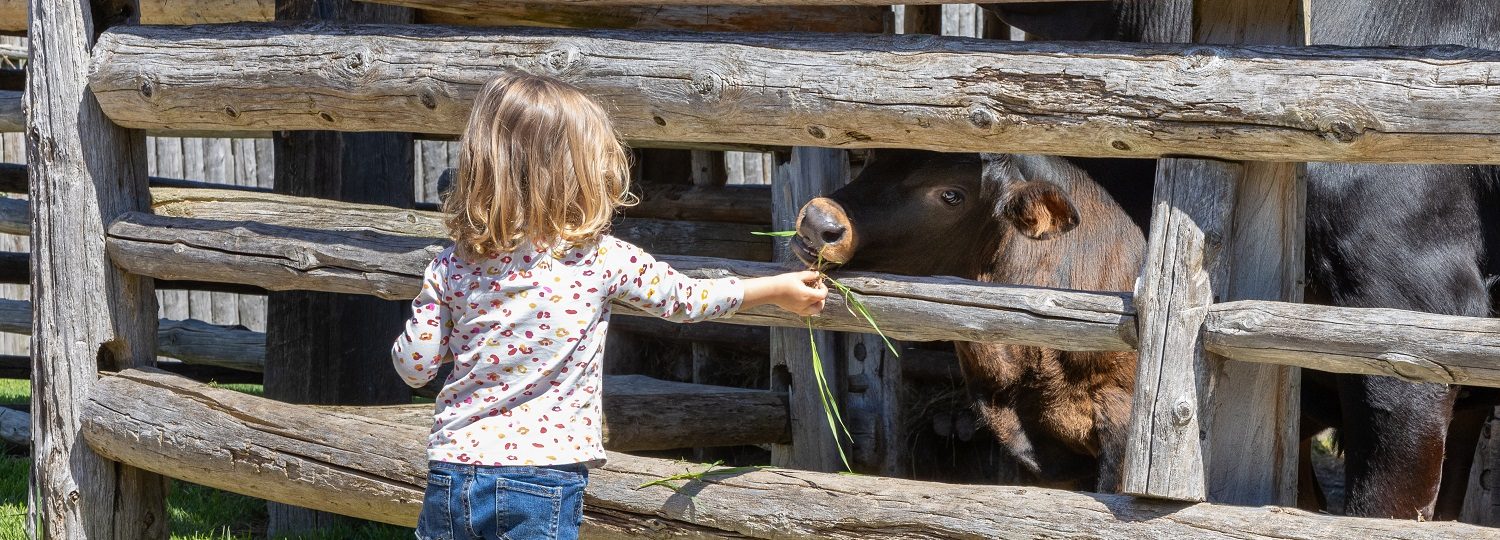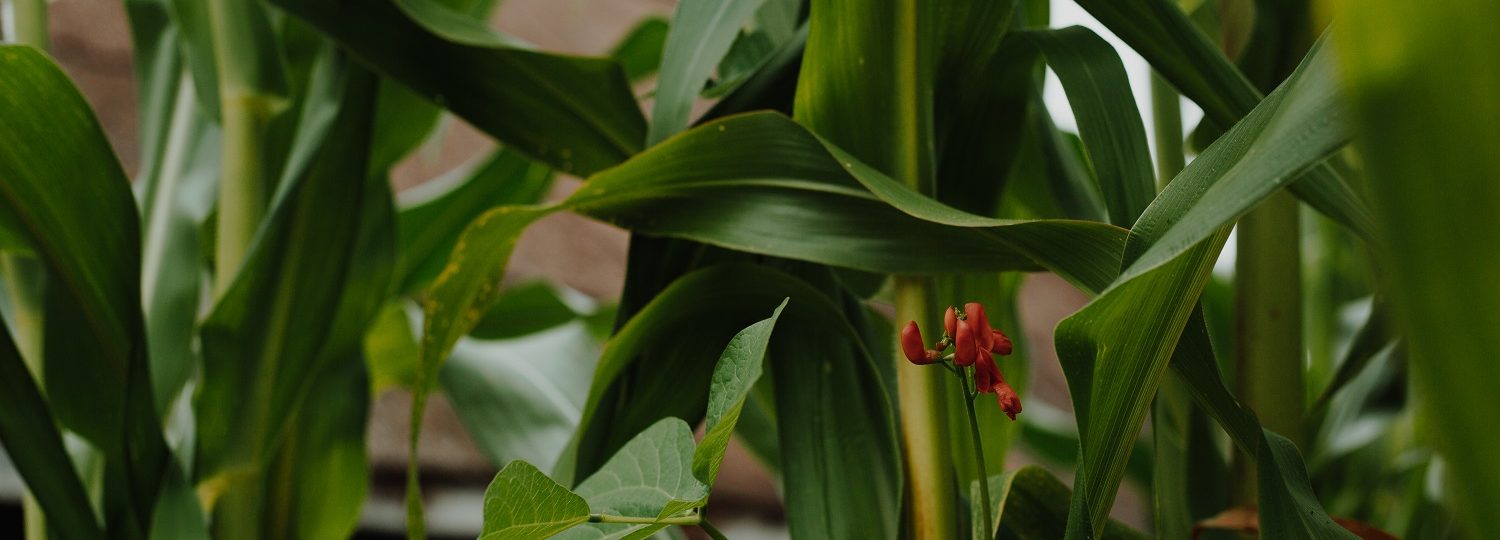Sainte-Marie’s heritage farm
Explore historic gardens and meet friendly heritage animals
Learn about the people, animals, and crops that helped to sustain life in Wendake in the 1600s. Connect with our costumed staff and experience the sights, sounds and scents of our working farm.
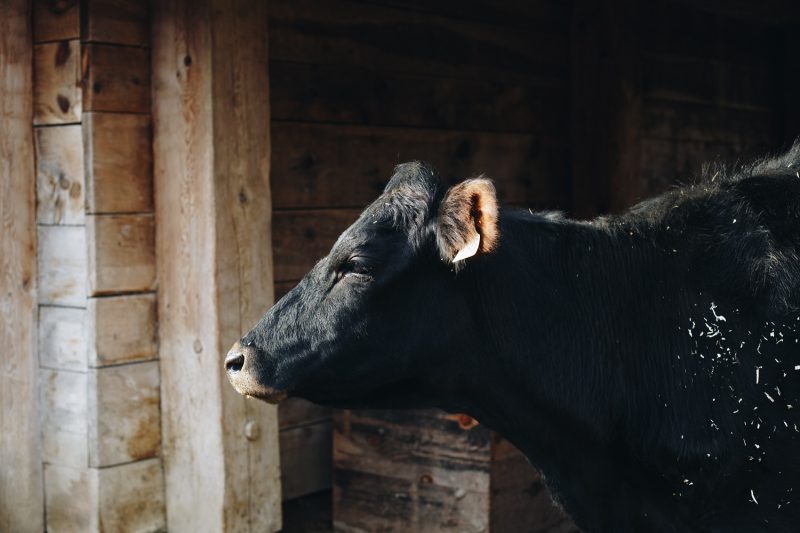
Canadienne breed cows
Our two heritage cows, Poppy and Sunshine, are descendants of the breed originally raised at Sainte-Marie among the Hurons in the 1600s. This is Canada’s original breed of dairy cattle, yet fewer than 200 Canadienne cows are registered in the country. Cows were important for manure production, helping to fertilize and enrich farm soil. They would also have been used as oxen, helping with chores.
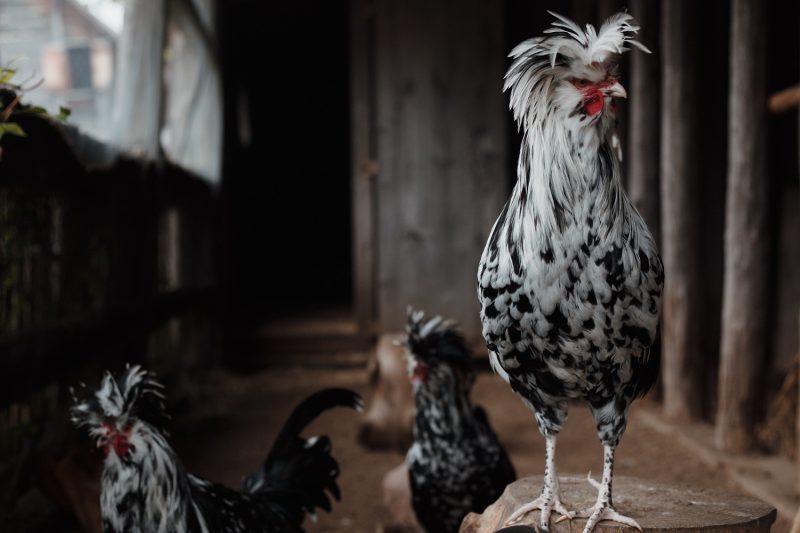
Houdan chickens
This breed was the most common domesticated fowl in Western France during the 17th century. They were held in high esteem due to excellent egg production, quality of meat and hardiness. Houdan chickens can be identified by their distintictive red crests, full beards, and five toes. They are thought to have been developed from ancient Roman fowl crossing with old French breeds of crested chicken.
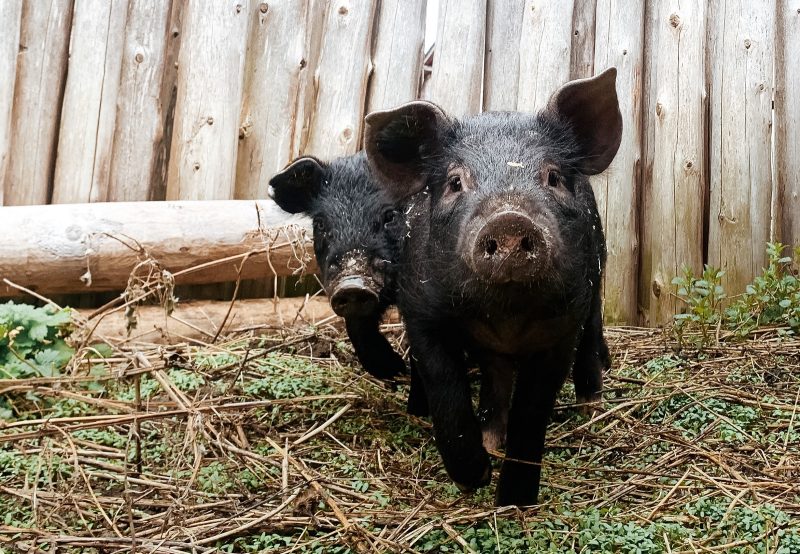
Heritage pigs
Pigs were the second type of French livestock brought to Sainte-Marie. Faunal archaeological records show that there were at least nine pigs at the mission. They were valued because they were hardy in cold temperatures, produced lots of piglets within a short maturity period, could forage and eat scraps – even digging through ice to access vegetation underneath.
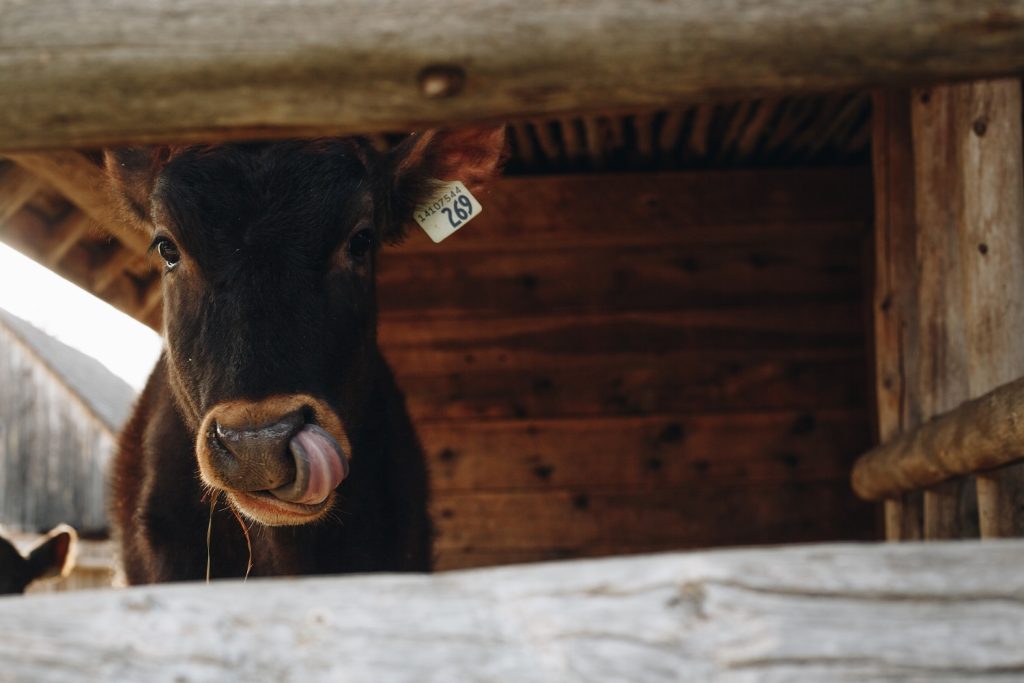
Meet our 2025 calf, Sunshine!
Sainte-Marie’s stables are home to a special guest this summer 2025 season: Sunshine, a Canadienne calf!
Sunshine will live on the historic site with her mom, Poppy, from May 3 to October 13. Come and meet both cows during your visit.
The story behind the farm
Both the French and the Wendat were prolific farmers. Upon their arrival in Wendake, the French quickly came to rely on Indigenous crops for survival – notably corns, beans and squash, also known as the three sisters. As the mission grew, they worked to bring in and cultivate more familiar foods.
The 17th-century Jesuits, donnés and engagés of Sainte-Marie worked hard to achieve self-sufficiency. A big part of that effort was farming!
At its peak, Sainte-Marie was home to several cows, chickens and pigs – all originally brought to Wendake in birch bark canoes from other areas of New France. There is also evidence that mission staff maintained several crop fields to ensure their survival.
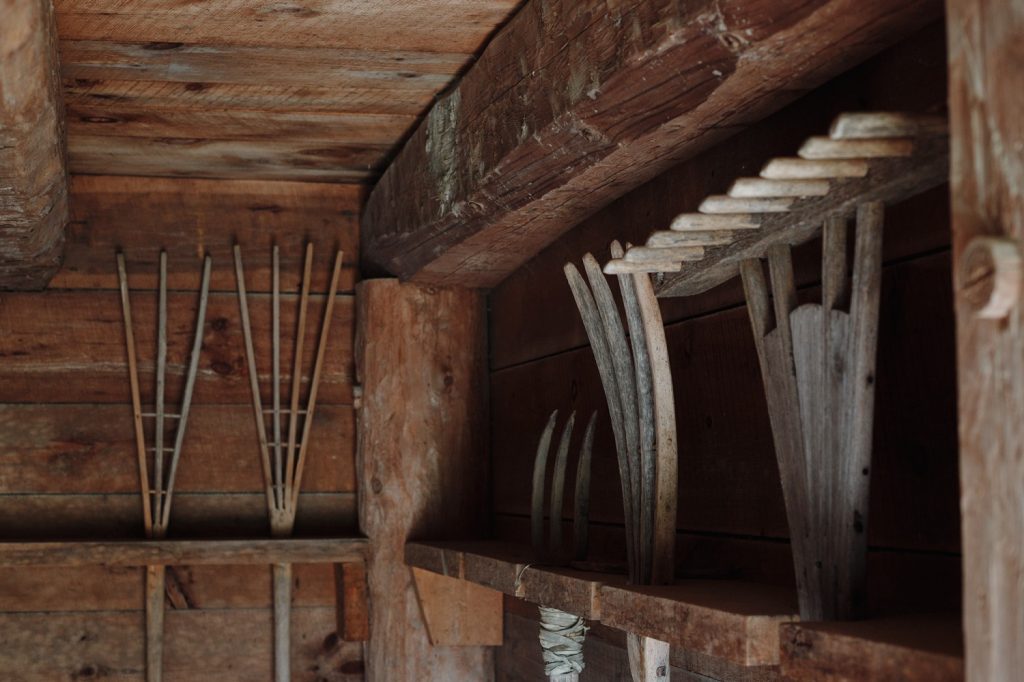
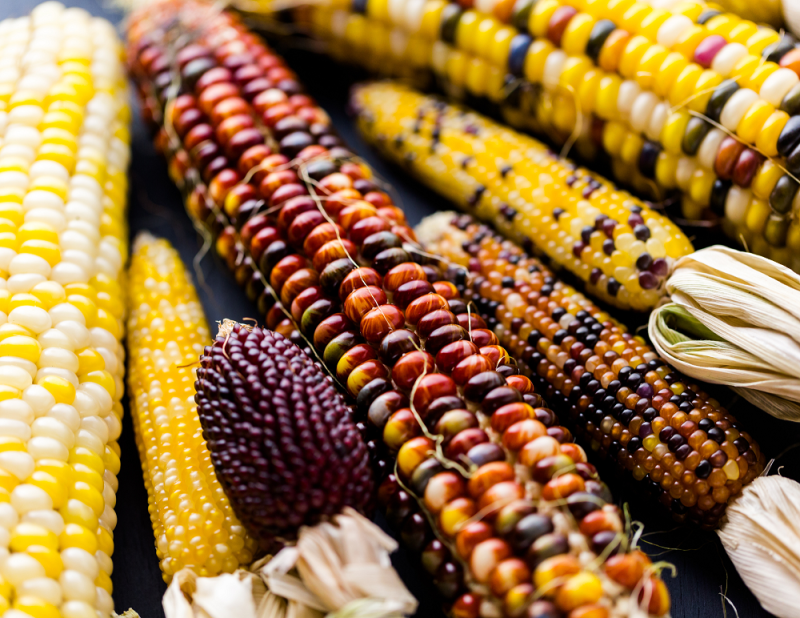
Corn
We grow northern flint corn at Sainte-Marie. This is the type of corn they would have sown and eaten here in the 1600s. It’s great for milling into corn meal and flour. Each kernel has a tough outer layer.
Corn was a dietary staple of the Huron-Wendat people as well as French mission residents.
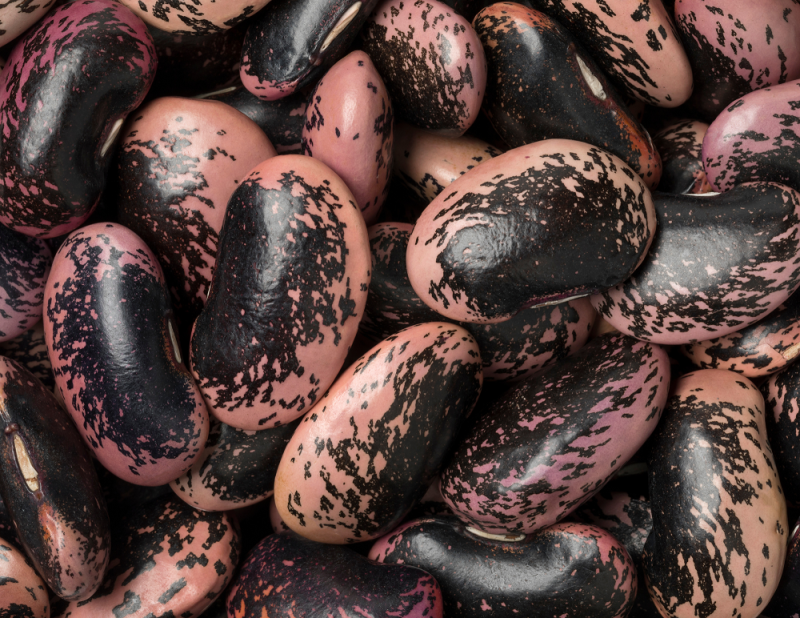
Beans
Beans are the “climbing” sister, relying on the corn for support and adding nitrogen to the soil, which benefits the corn and squash. Beans were often dried and stored with the corn in bark or wooden containers, for use in leaner months.
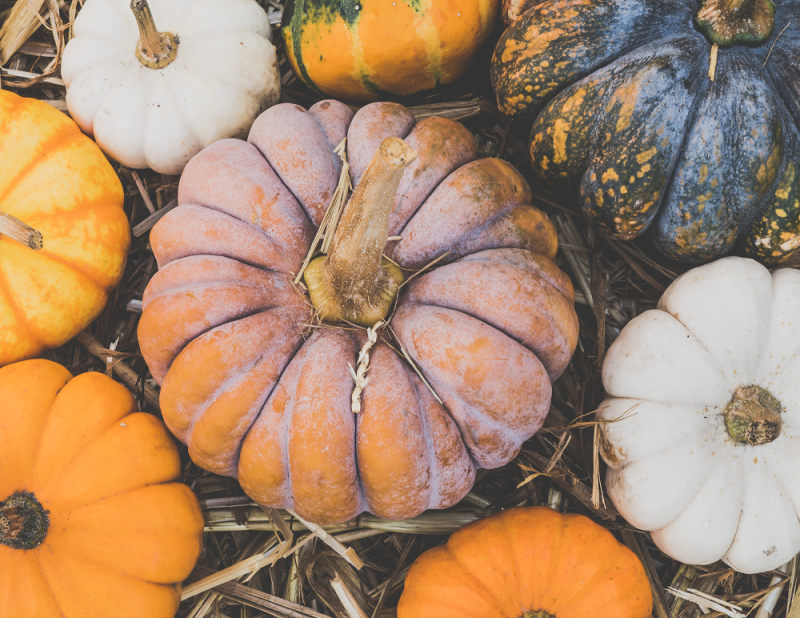
Squash
Squash is the “ground-covering” sister, providing shade and moisture retention, and protecting the other plants from weeds and pests.
A common Wendat soup was sagamité which included corn and squash enriched with fish or meat .

More about the story of Sainte-Marie
Located along the shores of Georgian Bay – Samuel de Champlain’s “mer douce” – and surrounded by wooded hillsides, this was the ancestral homeland of the Huron-Wendat nation, a branch of the Haudenosaunee. The Wendat were a matrilineal society of good traders and skillful farmers who called their land Wendake.
